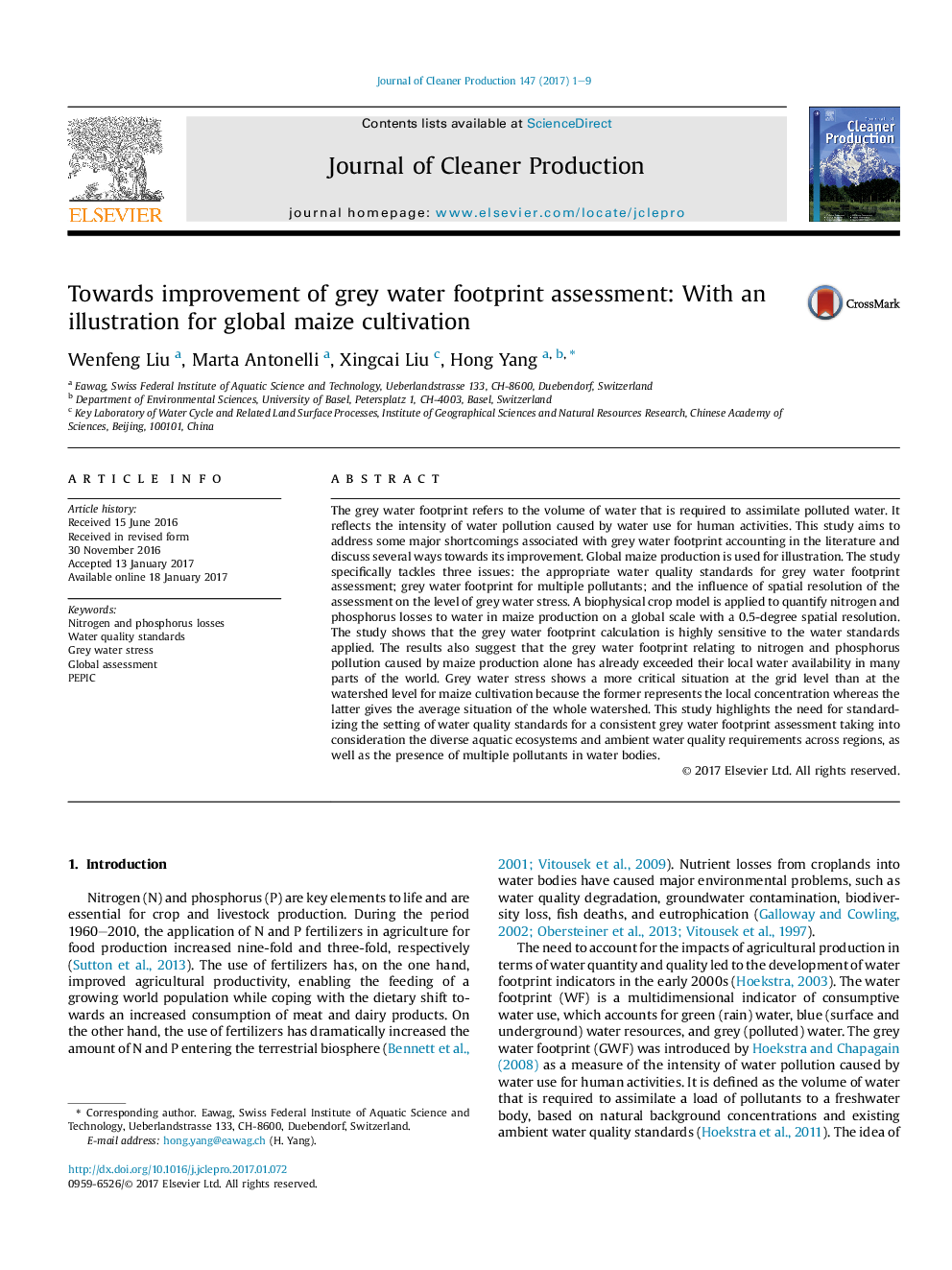| Article ID | Journal | Published Year | Pages | File Type |
|---|---|---|---|---|
| 5481452 | Journal of Cleaner Production | 2017 | 9 Pages |
Abstract
The grey water footprint refers to the volume of water that is required to assimilate polluted water. It reflects the intensity of water pollution caused by water use for human activities. This study aims to address some major shortcomings associated with grey water footprint accounting in the literature and discuss several ways towards its improvement. Global maize production is used for illustration. The study specifically tackles three issues: the appropriate water quality standards for grey water footprint assessment; grey water footprint for multiple pollutants; and the influence of spatial resolution of the assessment on the level of grey water stress. A biophysical crop model is applied to quantify nitrogen and phosphorus losses to water in maize production on a global scale with a 0.5-degree spatial resolution. The study shows that the grey water footprint calculation is highly sensitive to the water standards applied. The results also suggest that the grey water footprint relating to nitrogen and phosphorus pollution caused by maize production alone has already exceeded their local water availability in many parts of the world. Grey water stress shows a more critical situation at the grid level than at the watershed level for maize cultivation because the former represents the local concentration whereas the latter gives the average situation of the whole watershed. This study highlights the need for standardizing the setting of water quality standards for a consistent grey water footprint assessment taking into consideration the diverse aquatic ecosystems and ambient water quality requirements across regions, as well as the presence of multiple pollutants in water bodies.
Related Topics
Physical Sciences and Engineering
Energy
Renewable Energy, Sustainability and the Environment
Authors
Wenfeng Liu, Marta Antonelli, Xingcai Liu, Hong Yang,
